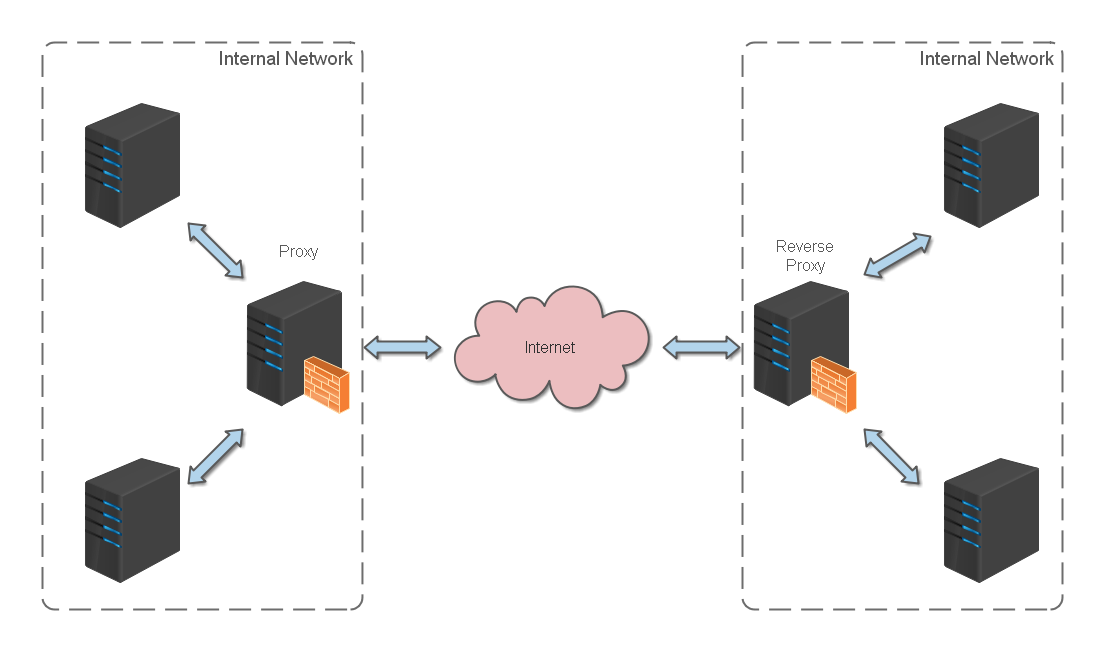1. Nginx简介
Nginx (engine x) 是一款轻量级的 Web 服务器 、反向代理服务器及电子邮件(IMAP/POP3)代理服务器
什么是反向代理?
反向代理(Reverse Proxy)方式是指以代理服务器来接受 internet 上的连接请求,然后将请求转发给内部网络上的服务器,并将从服务器上得到的结果返回给 internet 上请求连接的客户端,此时代理服务器对外就表现为一个反向代理服务器

2. Nginx基本命令
nginx -s stop # 快速关闭Nginx,可能不保存相关信息,并迅速终止web服务。
nginx -s quit # 平稳关闭Nginx,保存相关信息,有安排的结束web服务。
nginx -s reload # 因改变了Nginx相关配置,需要重新加载配置而重载。
nginx -s reopen # 重新打开日志文件。
nginx -c filename # 为 Nginx 指定一个配置文件,来代替缺省的。
nginx -t # 不运行,仅仅测试配置文件。nginx 将检查配置文件的语法的正确性,并尝试打开配置文件中所引用到的文件。
nginx -v # 显示 nginx 的版本。
nginx -V # 显示 nginx 的版本,编译器版本和配置参数。
如果不想每次都敲命令,可以在安装目录下新添一个启动批处理文件D:\openresty-1.21.4.2-win64\startup.bat,双击即可运行。内容如下
@echo off
rem 如果启动前已经启动nginx并记录下pid文件,会kill指定进程
nginx.exe -s stop
rem 测试配置文件语法正确性
nginx.exe -t -c conf/nginx.conf
rem 显示版本信息
nginx.exe -v
rem 按照指定配置去启动nginx
nginx.exe -c conf/nginx.conf
3. Nginx反向代理实践
nginx.conf 配置文件如下:
#user nobody;
worker_processes 1;
#error_log logs/error.log;
#error_log logs/error.log notice;
#error_log logs/error.log info;
#pid logs/nginx.pid;
# 工作模式及连接数上限
events {
worker_connections 1024; # 单个后台worker process进程的最大并发连接数
}
http {
# 设定mime类型(邮件支持类型),类型由mime.types文件定义
include mime.types;
default_type application/octet-stream;
# 设定日志
#log_format main '$remote_addr - $remote_user [$time_local] "$request" '
# '$status $body_bytes_sent "$http_referer" '
# '"$http_user_agent" "$http_x_forwarded_for"';
#access_log logs/access.log main;
# sendfile 指令指定 nginx 是否调用 sendfile 函数(zero copy 方式)来输出文件,对于普通应用,必须设为 on, 如果用来进行下载等应用磁盘IO重负载应用,可设置为off,以平衡磁盘与网络I/O处理速度,降低系统的uptime.
sendfile on;
#tcp_nopush on;
# 连接超时时间秒
#keepalive_timeout 0;
keepalive_timeout 65;
#gzip on;
upstream front_server{
# Vue前端本地启动地址,需在vue.config.js的devServer中配置allowedHosts: "all",否则会报Invalid Host header
server 127.0.0.1:8081;
}
upstream api_server{
# 微服务后端启动端口
server 127.0.0.1:8080;
}
server {
listen 80;
server_name localhost;
# 编码格式
charset utf-8;
#access_log logs/host.access.log main;
# 反向代理的路径(和upstream绑定),location 后面设置映射的路径
location ~ ^/ {
proxy_pass http://front_server;
}
# 跨域配置
location ~ ^/api/ {
#include enable-cors.conf;
proxy_pass http://api_server;
rewrite "^/api/(.*)$" /$1 break;
}
location /hello {
default_type 'text/plain';
content_by_lua_block {
ngx.say("Hello, OpenResty!")
}
}
#error_page 404 /404.html;
# redirect server error pages to the static page /50x.html
#
error_page 500 502 503 504 /50x.html;
location = /50x.html {
root html;
}
# proxy the PHP scripts to Apache listening on 127.0.0.1:80
#
#location ~ \.php$ {
# proxy_pass http://127.0.0.1;
#}
# pass the PHP scripts to FastCGI server listening on 127.0.0.1:9000
#
#location ~ \.php$ {
# root html;
# fastcgi_pass 127.0.0.1:9000;
# fastcgi_index index.php;
# fastcgi_param SCRIPT_FILENAME /scripts$fastcgi_script_name;
# include fastcgi_params;
#}
# deny access to .htaccess files, if Apache's document root
# concurs with nginx's one
#
#location ~ /\.ht {
# deny all;
#}
}
# another virtual host using mix of IP-, name-, and port-based configuration
#
#server {
# listen 8000;
# listen somename:8080;
# server_name somename alias another.alias;
# location / {
# root html;
# index index.html index.htm;
# }
#}
# HTTPS server
#
#server {
# 监听443端口。443为知名端口号,主要用于HTTPS协议
# listen 443 ssl;
# server_name localhost;
# ssl证书文件位置(常见证书文件格式为:crt/pem)
# ssl_certificate cert.pem;
# ssl_certificate_key cert.key;
# ssl配置参数(选择性配置)
# ssl_session_cache shared:SSL:1m;
# ssl_session_timeout 5m;
# 数字签名,此处使用MD5
# ssl_ciphers HIGH:!aNULL:!MD5;
# ssl_prefer_server_ciphers on;
# location / {
# root html;
# index index.html index.htm;
# }
#}
}
其中enable-cors.conf配置如下
# allow origin list
set $ACAO '*';
# set single origin
# 替换为自己域名
if ($http_origin ~* (localhost)$) {
set $ACAO $http_origin;
}
if ($cors = "trueget") {
add_header 'Access-Control-Allow-Origin' "$http_origin";
add_header 'Access-Control-Allow-Credentials' 'true';
add_header 'Access-Control-Allow-Methods' 'GET, POST, OPTIONS';
add_header 'Access-Control-Allow-Headers' 'DNT,X-Mx-ReqToken,Keep-Alive,User-Agent,X-Requested-With,If-Modified-Since,Cache-Control,Content-Type';
}
if ($request_method = 'OPTIONS') {
set $cors "${cors}options";
}
if ($request_method = 'GET') {
set $cors "${cors}get";
}
if ($request_method = 'POST') {
set $cors "${cors}post";
}
OK, 完毕,已验证可正常反向代理